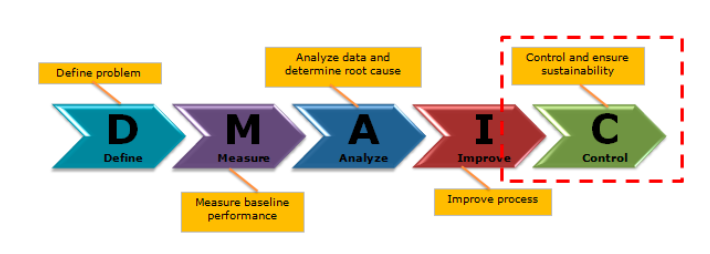Lean Six Sigma has gained so much popularity because, when it comes to handling huge companies, many things can get complicated in the process of growing. What comes to use is the way a company or business work in an organized and systematic manner with minimum effort. This not only might double the profits but also give happier employees and customers. It helps organizations in its overall growth
What is Lean?
The term ‘Lean’ is taken from the Japanese manufacturing industries though it has its roots in the Toyota Production System. Lean thinking allows organizations to become more sustainable. The primary goal of this methodology is to create maximum value for customers by reducing or eliminating unnecessary steps involved in a process.
It means that any step which doesn’t add value to the process is eliminated systematically. Lean methodology helps in the removal of following types of waste:
- Defects
- Overproduction
- Transportation
- Waiting
- Unutilized talent
- Motion
What is Six Sigma?
Six Sigma is a data-driven management approach which encompasses a set of techniques and tools for business process improvement. Bill Smith, an engineer in Motorola, developed Six Sigma in 1986.
It has gained tremendous momentum and acceptance throughout the industry. It seeks to improve quality by measuring and eliminating defects systematically until the defect number goes to zero.
Six Sigma methodology is used to improve the business processes, products or services. Hundreds of organizations have adopted this technique of problem-solving and have saved millions of dollars.
It works on a five-stage DMAIC framework. The stages namely

- Define
- Measure
- Analyze
- Improve
- Control
What is Lean Six Sigma?
Having its roots in the 1980s, Lean Six Sigma was introduced by Michael George and Robert Lawrence Jr. in their 2002 book: Lean six sigma: combining six sigma with lean speed.
Lean Six Sigma is the combination of the powerful concepts ‘Lean’ and ‘Six Sigma.’ US manufacturing companies first adopted this method.
This method strives to ensure quality in production and organizational processes by eliminating waste of physical resources, time, effort and talent. The purpose of this methodology is to provide customers with the best quality, cost, and delivery.
Lean mainly pays attention to waste reduction while Six Sigma emphasizes variation reductions using statistical data. To achieve six sigma goals, statistical data analysis and hypothesis tests are used whereas for Lean goals tools like kaizen and visual controls are used.
This method has given business and manufacturing companies a massive amount of profits while making sure their customers are happy.
Why is Lean Six Sigma so Important?
Organizations are continuously facing rising costs and high competition every day due to a dynamic environment. Six Sigma allows you to grow your business by tackling these problems.
Benefits of Using Lean Six Sigma:
- Reduces Cost
- Increases Revenue
- Increases Customer Satisfaction
- Improves Efficiency & Effectiveness
- Develops Employees within Your Organization
-
Reduce Cost
Cost saving is one of the main advantages of implementing Lean Six Sigma. Organizations may dramatically lower their costs by detecting and removing waste, simplifying processes, and minimizing defects and errors. This enables businesses to increase their R&D spending, grow their company, or simply increase their bottom line. However, by allowing an organization to offer its goods and services at a cheaper cost than its rivals, cost reduction can also increase a company’s competitiveness.
-
Increase revenue
Lean Six Sigma can help organizations grow their income by raising customer satisfaction, enhancing the quality of their goods and services, and lowering lead times. Companies may enhance the quality of their goods and services, which will promote consumer loyalty and repeat business, by discovering and removing process flaws and faults. Also, by lowering lead times, businesses can better meet consumer needs, boost client happiness, and gain a competitive edge in the market.
-
Increase Customer Satisfaction
Any business’ success depends on its ability to satisfy its customers. By locating and resolving the underlying causes of customer complaints and issues, Lean Six Sigma may assist businesses in increasing customer satisfaction. Organizations can design and provide products and services that meet or exceed consumer expectations by knowing their needs and expectations. Increased client happiness, loyalty, and repeat business result from this.
-
Improve Efficiency & Effectiveness
Enhanced efficacy and efficiency is a major advantage of Lean Six Sigma. Organizations can streamline processes, cut waste, and get rid of pointless stages to boost efficiency and optimize operations. This results in quicker delivery times, better quality goods and services, and higher levels of client satisfaction. Organizations can also lower expenses by increasing efficiency, which can boost their bottom line and increase their marketability.
-
Develops Employees Within Your Organization
Last but not least, Lean Six Sigma can support employee development inside an organization. Organizations can enable employees to become expert problem solvers and process improvement specialists by offering training and support for Lean Six Sigma approaches. As a result, the organization becomes more productive and efficient, and it also promotes employee engagement and a culture of continual improvement. Improved staff retention, performance, and happiness can result from this.
Conclusion
To sum it all up, a combined approach of lean six sigma helps in improving process efficiency, resource optimization, customer satisfaction, cost-cutting, and profits.
Lean aims at waste reduction, while six sigma aims at reduction of process variation. Nevertheless, both the approaches blend to realize the full potential of process improvement.
Key Highlights
Take Action Now and Make a Difference
Feel Free To Contact Us for Further Information
